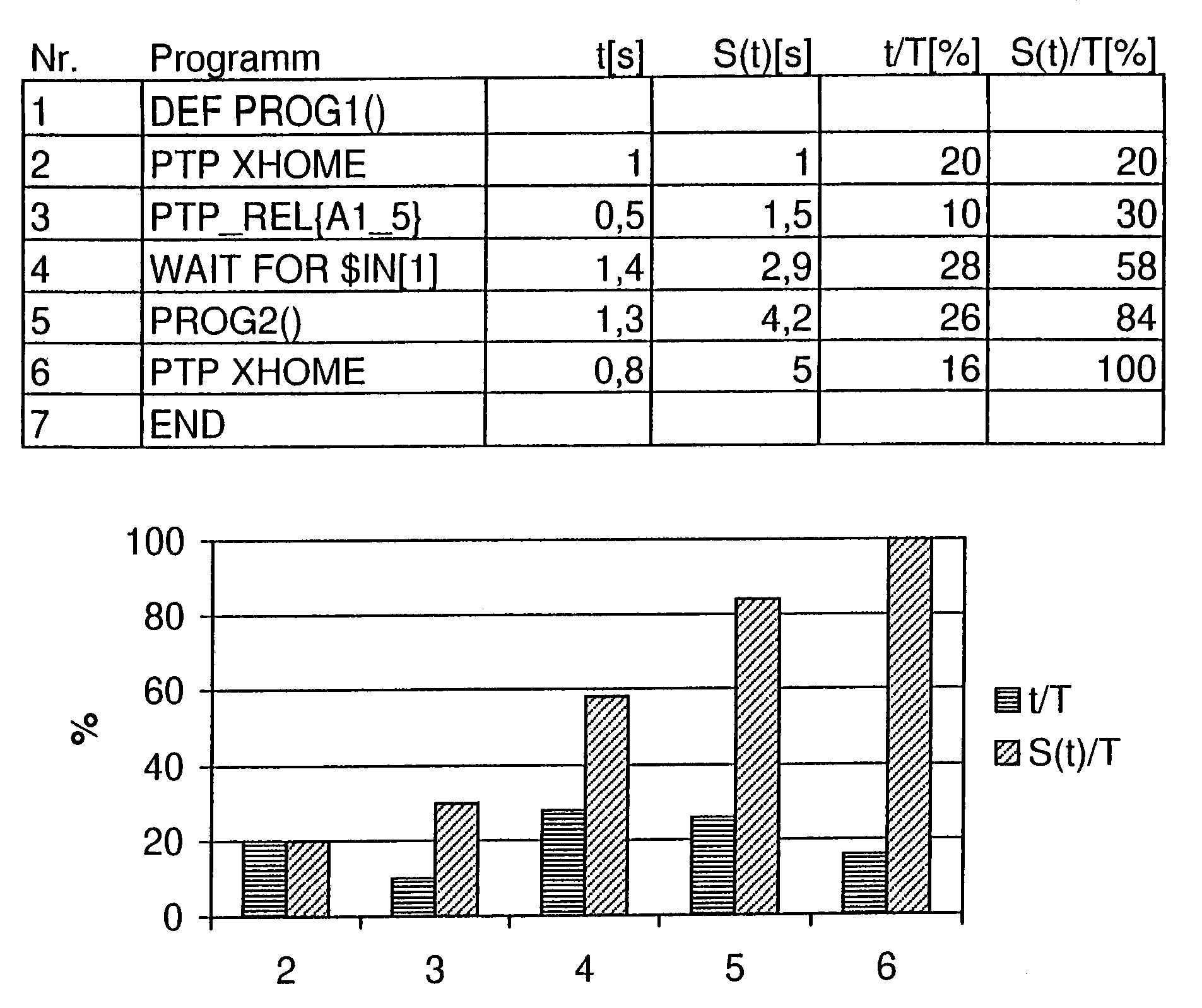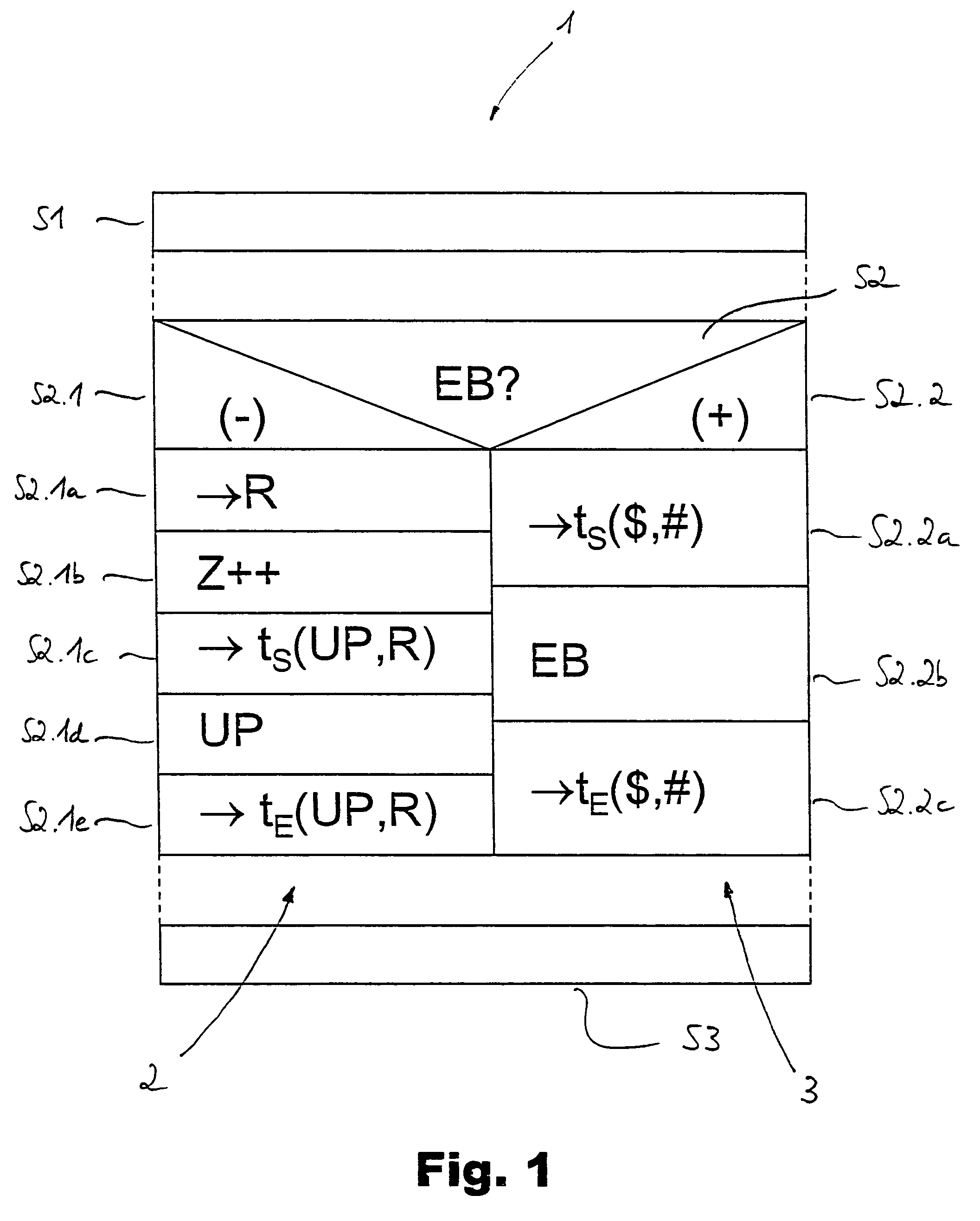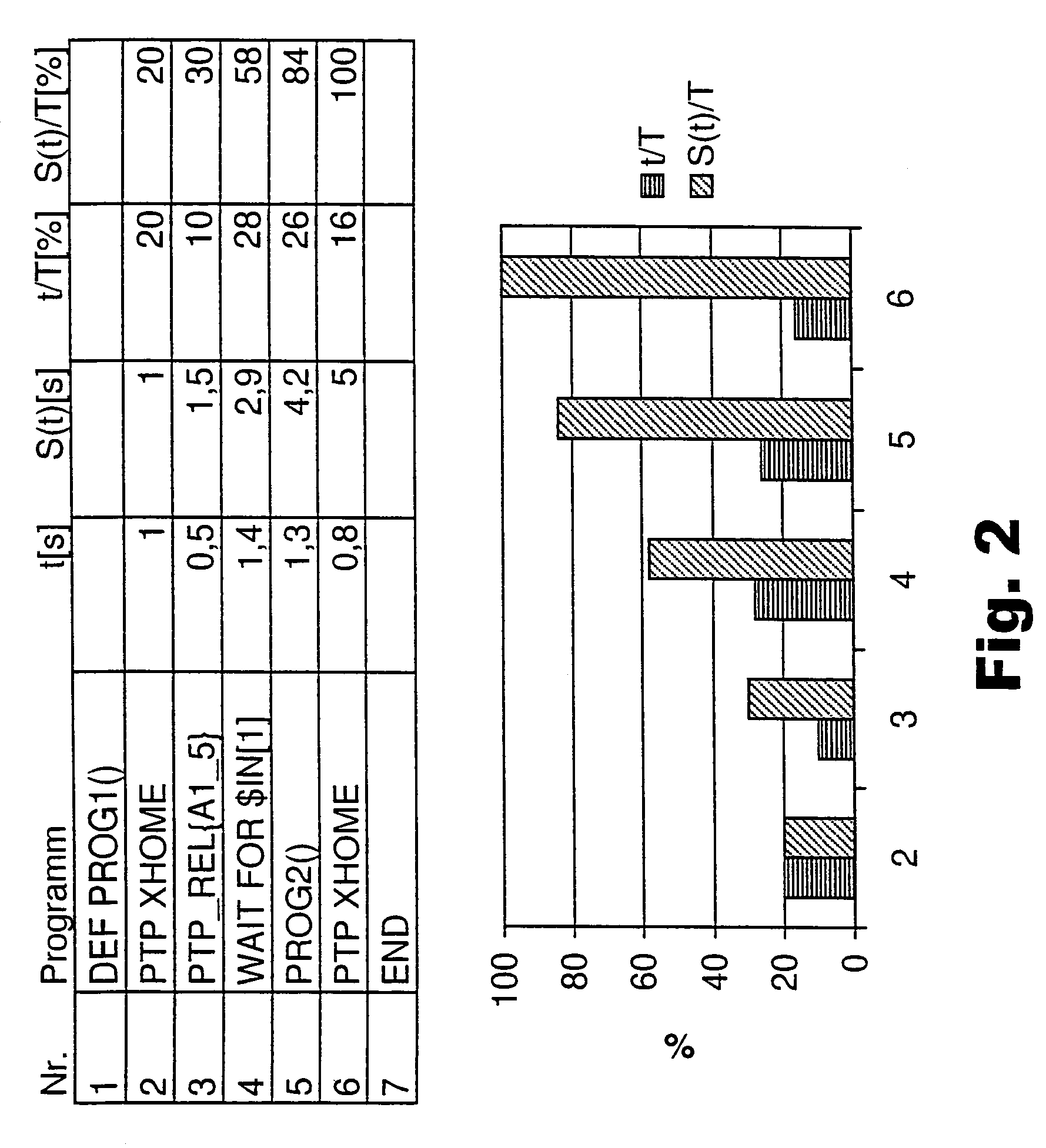Process for determining and providing run time information for robot control programs
a robot control and run time information technology, applied in the direction of programme-controlled manipulators, specific program execution arrangements, program control, etc., can solve the problems of high accuracy of measurement, unambiguous statement of measurement, and erroneous or non-optimal programming
- Summary
- Abstract
- Description
- Claims
- Application Information
AI Technical Summary
Benefits of technology
Problems solved by technology
Method used
Image
Examples
example
[0027]
DEF P1 ( )INT A; integer AA=FAKULTAET (5)ENDDEF FAKULTAET (INT F)IF F>1 THENRETURN (F*FAKULTAET (F−1)); crossed calling of SR “Fakultat”ENDIFRETURN (1)END
Calling Hierarchy (Subroutine FAKULTAET is Designated Here by F for Short): F(5)->F(4)->F(3)->F(2)->F(1)
Depth of Recursion R:
[0028]
01234
Execution Time [μsec]:
[0029]
97531
Delta Execution Time [μsec]:
[0030]
2222
[0031]The overall duration for the calculation of the Fakultät is 9 μsec in the example, and a simple calculation takes 2 μsec, and the Fakultat requires 1 μsec at the lowest level, because FAKULTAET (1) can be calculated the fastest (the return value 1 is returned).
[0032]The value R for the depth of recursion of the subroutine SR is first stored according to the present invention in step S2.1a. The counter Z is then incremented in step S2.1b, which shows how often the subroutine was executed. The notation “Z++” designates an increase in the counter value by 1, i.e., Z->Z+1. An initial system time ts for the execution of t...
PUM
 Login to View More
Login to View More Abstract
Description
Claims
Application Information
 Login to View More
Login to View More - R&D
- Intellectual Property
- Life Sciences
- Materials
- Tech Scout
- Unparalleled Data Quality
- Higher Quality Content
- 60% Fewer Hallucinations
Browse by: Latest US Patents, China's latest patents, Technical Efficacy Thesaurus, Application Domain, Technology Topic, Popular Technical Reports.
© 2025 PatSnap. All rights reserved.Legal|Privacy policy|Modern Slavery Act Transparency Statement|Sitemap|About US| Contact US: help@patsnap.com



